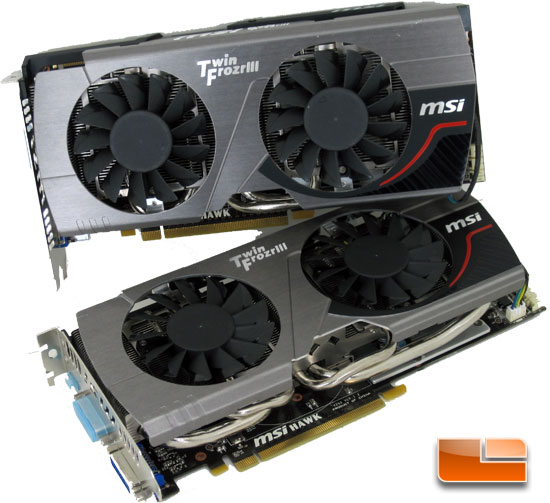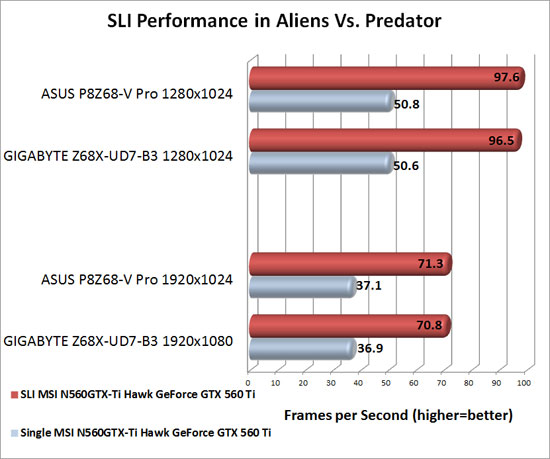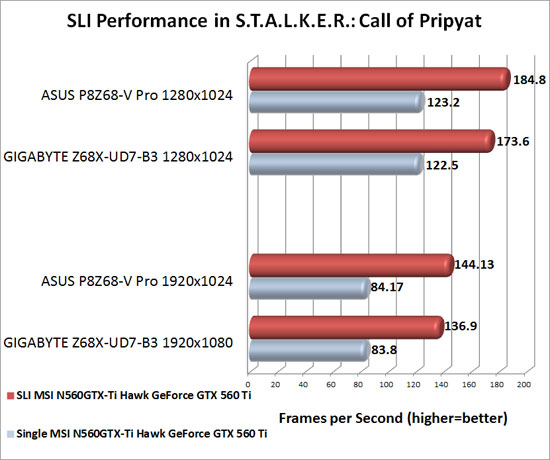GIGABYTE Z68X-UD7-B3 Intel Z68 Motherboard Review
NVIDIA SLI Scaling Performance

In order to update our NVIDIA SLI testing we contacted our friends over at MSI and they were kind enough to send over a pair of their NVIDIA GeForce N560GTX-Ti HAWX edition graphics cards.

There is very little SLI performance difference in Aliens Vs. Predator between our Intel Z68 platforms. The ASUS P8Z68-V Pro does hold a slight edge over the GIGABYTE Z68X-UD7-B3 in both single card and SLI configurations. At 1280×1024 the GIGABYTE Z68X-UD7-B3 was .2 frames per second down while in SLI there was a 1.1 frames per second difference between the GIGABYTE and ASUS boards. At 1920×1080 it is much the same story. The GIGABYTE Z68X-UD7-B3 was .2 fps behind while in SLI we saw a .5 fps difference.

In Total War: Shogun 2 we see very little difference in performance once again. At 1280×1024 the GIGABYTE Z68X-UD7-B3 had a single card performance of 37.57 frames per second and 66.5 frames per second in SLI. Both numbers are just behind those of the ASUS P8Z68-V Pro, 2% in single card configuration and 2.3% in SLI. Cranking up the resolution to 1920×1080 the GIGABYTE Z68X-UD7-B3 was able to edge out the ASUS P8Z68-V Pro. In SLI the Z68X-UD7-B3 was 1% faster, while single card performance was 3.3% ahead.

S.T.A.L.K.E.R.: Call of Pripyat i s the first benchmark to show much of a difference in SLI Scaling. At 1280×1024 the two boards showed very little difference with a single MSI N560GTX-Ti Hawx graphics card. In fact both resolutions showed only ~.5% difference with the ASUS P8Z68-V Pro taking the lead. Once we added the second MSI N560GTX-Ti Hawx card into the mix the differences grew. At 1280×1024 the GIGABYTE Z68X-UD7-B3 jumped to 173.6 frames per second for a gain of 41.7% while the ASUS P8Z68-V Pro jumped to 184.8 frames per second which is a gain of 50%. Once we cranked up the resolution to 1920×1080 the GIGABYTE Z68X-UD7-B3 jumped from 83.8 frames per second up to 136.9 for a gain of 63.4%. The ASUS P8Z68-V Pro jumped from 84.17 frames per second to 144.13 frames per second for a gain of 71.2%.

Comments are closed.